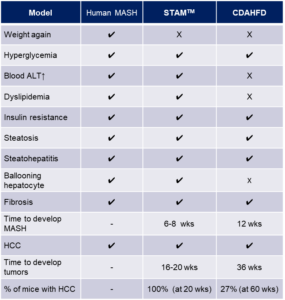MOA demonstration #2【diponectin】|A drug efficacy evaluation study using STAM™ mice “Inhibition of MASH and fibrosis progression by adiponectin-derived peptide”.
We introduce the pre-clinical studies in MASH drug development using Adiponectin, adipoR1 , adipoR2, etc. as MOA.
Demonstration of adiponectin-derived peptide ALY688 in a drug evaluation study using STAM™ mice
►The adiponectin‐derived peptide ALY688 protects against the development of metabolic dysfunction‐associated steatohepatitis – Huang – 2024 – Clinical and Translational Science – Wiley Online Library
(Zhe Huang et al., Clinical and Translational Science, 17, e13760, 2024) PMID: 38847320
This is published in Clinical and Translational Science in February 2024 by a research team from Allysta Pharmaceuticals, Inc. in the United States.
In this paper, a pharmacodynamics evaluation study of ALY688 using STAM™ mice as well as CDAHFD model mice has been conducted. Based on the data obtained from these studies, they report on the anti-NASH and anti-fibrosis effects of ALY688.
If the MOA of your drug candidate in development is adiponectin or adipoR1 , adipoR2, STAM™ mice can be used to evaluate its efficacy.
Several ideal MASH (NASH) models have been described in the literature, but currently no model exists that meets all of these criteria, and it is recommended that at least two or more MASH models be used in drug efficacy evaluation studies (Daniel Jahn et al , Biochim Biophys Acta Mol Basis Dis., 1865, 943-953, 2019, Prasanna K. Santhekadur et al, J Hepatol., 68, 230-237, 2019, Henrik H Hansen et al, Drug Discov Today, 22, 1707-1718, 2017).
Below you find a table, comparing STAM™ and CDAHFD mice:
STAM™ mice show MASH, fibrosis, and hepatocellular carcinoma with a background of type 2 diabetes, a pathological progression similar to human MASH pathology, but fibrosis does not progress to cirrhosis. On the other hand, the CDAHFD model does not have a background of metabolic abnormalities but shows severe fibrosis. By conducting drug efficacy evaluation studies using both models, the shortcomings of both models can be complemented and the full potential of the test substance for treating the MASH pathology can be evaluated.
Table 1. Comparison between STAM™ mice and CDAHFD

Apart from STAM™ and CDAHFD mice, we also have background data for other disease models such as GAN diet, HFHF, MCD, and WD +CCl4, and can suggest the best fitting MASH model based on your study objectives.
If you are interested in our MASH-related drug evaluation testing services, please feel free to contact us.
